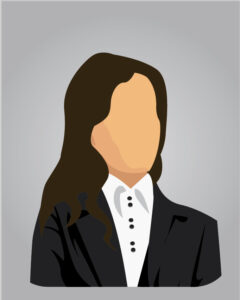Subject: Damages and repair of masonry, steel and timber structures (17.GG517 )
Native organizations units: Department of Civil Engineering
| Category | Professional-applicative |
| Scientific or art field |
|
| ECTS | 5 |
Introduction to basic aspects of durability of masonry, steel and timber structures.
Student is competent to register and classify defects and damages, determine their cause and assess the condition of masonry, steel and timber structures. Student is also capable to elect and plan the most optimal method for repairing a certain element or an entire structure depending on the cause and level of damage, possibilities for repair, available financial means and other relevant conditions.
Masonry structures: Causes, deterioration mechanisms and forms of damage in masonry structures. Classification and presentation of damage in masonry structures due to structure overload, undistributed settlement and accidental actions (fire, earthquake, explosion, etc). Materials and techniques for structural repair of masonry structures. Materials and techniques for protecting masonry structures (moisture protection, heat protection, etc.). Steel structures: Damages on steel structures due to corrosion and their classification. Damages on steel structures due to high temperatures and fires, snow overloads, ice influence in closed steel profiles, etc. Methods and techniques for repairing the damaged steel structures. Protection of steel structures. Timber structures: Factors for providing durability and expected exploitation period of individual types of timber structures. Types, classification and illustration of defects and damages in timber structures related to the nature of the cause. Methods and techniques for identifying and quantifying damages. Methods and techniques for repair and protection (replacement, filaments, gluing, reinforcement, element addition, compression). Repairing the cultural heritage structures. Examples of characteristic damage, assessment and repair of masonry, steel and timber structures.
Within lectures, students are delivered presentations with photographs, tables, diagrams, formulas and emphasised texts – definitions to provide explanations for the content determined by the syllabus. There are also short thematic films. At auditory practice students are presented with diverse structures where assessment and repair is completed in order to be better acquainted with the methodology, gathered data processing and decision-making, as well as with possible repair solutions. In all teaching forms students need to take active participation. Students have an obligation to do a seminar paper. For all students there is an obligatory professional excursion (structures under repair). The examination has an oral part (theoretical and practical). During the semester, the oral examination can be taken as three partial examinations. Students who do not take the oral part of the examinations via partial examinations are obliged to take the oral examination in the exam terms.
| Authors | Title | Year | Publisher | Language |
|---|---|---|---|---|
| 2003 | English |
| Course activity | Pre-examination | Obligations | Number of points |
|---|---|---|---|
| Coloquium exam | No | No | 20.00 |
| Presentation | Yes | No | 10.00 |
| Lecture attendance | Yes | Yes | 5.00 |
| Term paper | Yes | Yes | 20.00 |
| Exercise attendance | Yes | Yes | 5.00 |
| Oral part of the exam | No | Yes | 70.00 |
| Coloquium exam | No | No | 20.00 |
Assoc. Prof. Lukić Ivan
Associate Professor
Lectures

Asst. Prof. Kočetov-Mišulić Tatjana
Assistant Professor
Lectures
Asst. Prof. Draganić Suzana
Assistant Professor
Practical classes

Asst. Prof. Jovanović Đorđe
Assistant Professor
Practical classes
Faculty of Technical Sciences

© 2024. Faculty of Technical Sciences.
Contact:
Address: Trg Dositeja Obradovića 6, 21102 Novi Sad
© 2024. Faculty of Technical Sciences.



